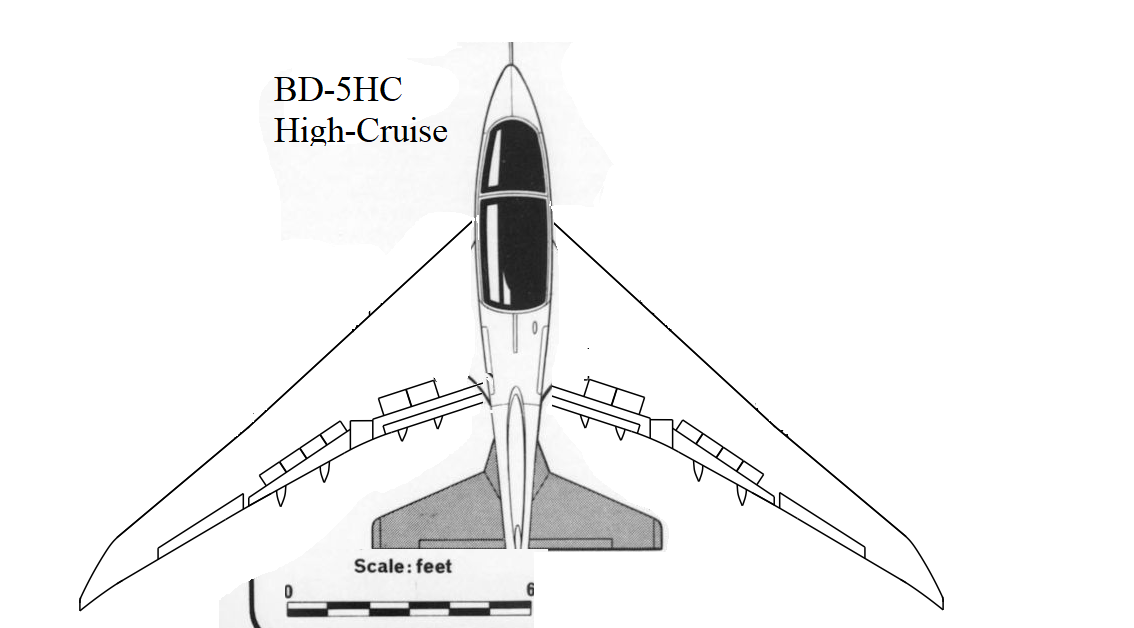At the loss of its acrobatic ability, could an airfoil similar to the 747 be downsized to allow a small jet to climb higher and extend its range?
This plane with its wing profile is highly acrobatic, but has a range of only 400 statute miles compared to the 900+ miles that its propeller counterparts gets. I believe it has much to do with the type of airfoil. Jim Bede, the designer of the plane, originally used a propeller version meant for travel, not acrobatics. As time progressed the profile of the wing evolved for more stability and acrobatic performance instead of stability and range.
Here I have a BD-5J Micro Jet with a wing span of 13.5 ft.

and another version I call the BD-5HC High Cruise where I pasted on some 747 wings. Is it plausible to fly it in the same method as a 747 using lower altitude speed limits and increasing speed in higher altitudes?
I have another question related but with forward swept wings here, Are Foward Swept Wings for a Rear Propeller Airplane Feasible?

